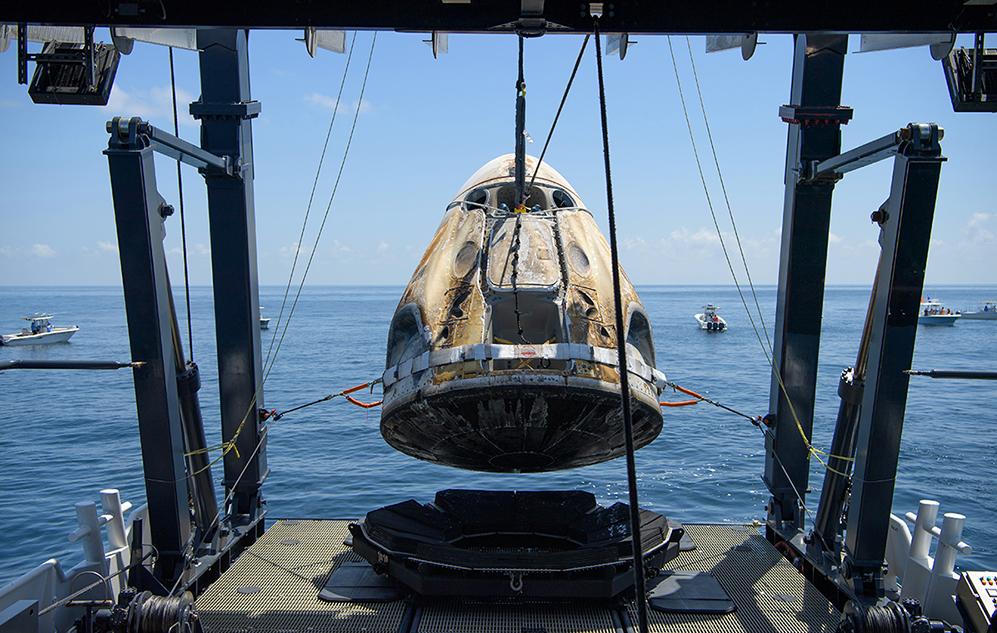
Shuttle-Analysis Software Improves Airplane, Turbine Safety
Subheadline
Crack-growth software that started with shuttle program has become global standard
Nothing is ever perfect, but the farther one is from the safety of solid ground, the more dangerous small imperfections can become. The airline industry and the country got a reminder of this hard truth in the late 1980s.
In April of 1988, cracks in the fuselage on an Aloha Airlines flight caused the plane’s roof to rip off about 20 minutes into a short flight from Hilo to Honolulu in Hawaii. A flight attendant was ejected and never found, but pilots managed an emergency landing at a Maui airport without further casualties. The following year, a United Airlines flight crashed while attempting an emergency landing at an airport in Sioux City, Iowa, killing 112 of the 296 people on board. Investigation determined that a crack in the fan disk of one of the plane’s tail-mounted engines had caused the fan rotor to fracture, releasing pieces of metal that sliced through lines for all three of the plane’s independent hydraulic control systems.
Many other planes in the airlines’ fleets were found to have cracks similar to those in the Aloha Airlines fuselage, which had previously been deemed insignificant. Congress held hearings and called on the Federal Aviation Administration (FAA), NASA, and other agencies to take action.
One result was the airplane industry’s adoption of “damage-tolerant” design philosophy, the idea that a structure should be able to function safely despite cracks and other damage until they can be detected and repaired. It’s an approach NASA had taken since the early days of the Space Shuttle Program.
This was how an obscure software the space agency had been developing and using for a decade began its rise to become the worldwide standard for fracture mechanics, helping to prevent such accidents from recurring and eventually spreading to the commercial space and even energy industries.
Today, airplane manufacturers assume that as soon as a plane rolls off the assembly line, it may already have cracks and flaws somewhere. The question is what sorts of fractures could eventually cause a failure. Before production even begins, that question has been answered by the plane’s designers with the help of sophisticated fracture-mechanics analysis software.
For business jet manufacturer Bombardier Inc., as for many of the world’s largest producers of aircraft, that software is NASGRO, born under NASA’s Space Shuttle Program. “We use it in our day-to-day design, production, and support of our planes,” said Pascal Lortie, structural engineer at the Canadian company, which has its U.S. headquarters in Wichita, Kansas.
NASGRO Moves Beyond NASA
Following the high-profile airline incidents, it became clear that NASA’s fracture-mechanics software was the best tool available for assessing the risks posed by actual or possible cracks. In fact, Joachim Beek, who was already working on NASGRO at the time at NASA’s Johnson Space Center in Houston, recalled one engineer running a NASGRO analysis using what was known about the faulty fan disk in the Sioux City crash and arriving at a probable failure on almost exactly the flight that ended in disaster. “That was eye-opening to me,” said Beek, who is now Johnson’s team lead for fracture control and for the software’s continued development.
Developing that capability, however, had been a monumental task. NASGRO employs an extensive database of material properties and formulas for solving for crack growth based on a component’s shape, the amount of force applied to it, how that force is distributed, and different possible shapes and orientations of cracking. In practice, for example to determine aircraft maintenance and retirement schedules, engineers use NASGRO to calculate a component’s potential for fracturing under repeated stress cycles. They start with the largest hypothetical crack an inspection could miss and calculate the smallest number of cycles in which that crack could grow enough to cause a failure. Then they usually divide that number by a safety factor (NASA divides by four) to be safe.
Ultimately, as aircraft manufacturers came to rely on the software, the space agency decided it needed help supporting the program. In 2000, NASA initiated a Space Act Agreement with Southwest Research Institute (SwRI), a nonprofit research and development organization, to manage NASGRO and license it to industry.
The software’s inventors hadn’t originally imagined it as an industry tool, though. They were only trying to solve novel problems presented by the world’s first reusable spacecraft. Any spacecraft undergoes immense stress, especially during launch and atmospheric reentry, and nothing had ever been designed to survive those ordeals more than once. Not only was a space shuttle supposed to last for 100 missions, but it was the first combination of launch vehicle, aircraft, and spacecraft, and it comprised a huge number of complicated, critical structures made with materials that had vastly different fracture properties.
Leading the effort at Johnson to digitally analyze all these factors was Royce Forman, who had started working on crack-propagation analysis software in the Air Force in the 1960s. “He was really one of those foundational figures in the business who was doing research back when the science was just being discovered,” said Craig McClung, who now helps manage NASGRO as a program director at SwRI. “When he came to NASA, he had a vision for developing software to do these kinds of things, and he kept chasing that vision over many, many years.”
As a result of Forman’s tenacity and NASA’s buy-in, McClung said, by the time the software that began around 1980 as NASA/FLAGRO was renamed NASGRO and introduced to industry, it was well ahead of any comparable program.
In 2003, it was one of two programs named NASA Software of the Year and also won an R&D 100 award.
“It’s easier to win the race when you start off ahead,” McClung said, noting that it was also easier for other players to join the NASGRO effort than to start their own software from scratch.
Competitors Cooperate to Ensure Safety
Major manufacturers across four continents have indeed joined team NASGRO. Under the Space Act Agreement, while Beek and other expert users across all of NASA’s field centers, as well as the FAA and the European Space Agency, continually contribute to the program’s annual updates, more than 20 companies also provide input through the NASGRO Consortium that McClung manages at SwRI.
“We can share our needs and experiences at the annual meetings and influence the software’s development, and that’s a huge advantage,” said Lortie. In each update cycle, he said, the institute consolidates hundreds of requests and suggestions from consortium participants and puts priorities to a vote to determine the next changes to be made to the software.
Lortie estimated Bombardier has about 100 employees using NASGRO for everything from designing planes with optimized strength and weight to creating repairs for in-service damage and writing maintenance schedules for new aircraft. He said the company once had its own fracture-mechanics software but eventually decided it was spending too much time and money updating it and keeping up with the field’s latest science and technology. Instead, NASGRO’s cooperative model “is much more efficient than everyone having their own software and trying to find their own solutions to common problems,” he said, adding, “We’re encouraged knowing it’s used by so many people around the world in different industries, and having NASA and Southwest’s expertise behind it.”
The cooperative approach also pools resources, with licensing and consortium participation fees covering a substantial portion of the cost of constant updates and improvements that are driven by and benefit all participants.
Bombardier first used NASGRO to design and support its narrow-body CSeries airliner, which is now the Airbus A220, and more recently, its Global 7500 long-range business jet. Not only was the software run “probably 10,000 times” to design the Global 7500 “from nose to tail,” Lortie said, but Bombardier required all the companies across four continents that supplied parts for the plane to analyze those components with NASGRO.
Among the other airplane manufacturers that participate in the consortium are Boeing, Airbus, the Brazilian Embraer, the Japanese Mitsubishi Heavy Industries, and more. Some of the world’s largest helicopter producers, including Sikorsky and the Italian aerospace and defense company Leonardo, are also participants, as are most of the largest spacecraft manufacturers including SpaceX, United Launch Alliance, Blue Origin, and Sierra Nevada Corporation.
Nearly a thousand other companies also license the software without participating in the consortium. And not all NASGRO users are in the business of flight.
More Reliable Power to the People
One of the consortium’s longest-running participants is German energy giant Siemens Energy, which uses NASGRO primarily to design utility- and industrial-scale gas turbines that are responsible for 16% of the world’s energy production.
Around the time of the consortium’s formation, Siemens was considering developing its own fracture-mechanics software, said Phillip Gravett, who now manages turbine mechanical integrity at the company’s U.S. headquarters in Orlando, Florida. The software didn’t meet all his department’s needs at the time, but the cooperative model offered chances to expand its capabilities. “The consortium has been a two-way street,” he said. “We were able to take advantage of the extensive capabilities already in NASGRO but also promote some unique developments for gas turbines that may also benefit other users.”
For example, the NASGRO team developed several models to evaluate gas turbine parts that endure temperatures ranging from minus 40°F to over 3,000°F. “With the equipment we produce being 10 times more powerful than aircraft engines, and with spinning components weighing upwards of 200 tons, the safety NASGRO helps us achieve is of utmost importance to us,” Gravett said.
After 20 years, he said, “NASGRO continues as one of the design tools Siemens Energy uses to create more powerful, efficient, and reliable products for the energy sector.”
NASA, meanwhile, has used NASGRO to analyze spacecraft from the space station to planetary rovers to the James Webb Space Telescope.
At Johnson, Beek is now using the software to oversee fracture control for the Commercial Crew Program, which manages the development of commercial spacecraft to transport astronauts to and from the space station. He said NASGRO has had to continually change with the times, as companies and NASA alike introduce new spacecraft materials and construction methods. “It’s not the same as it was 10 or 20 years ago,” he said. “You’re always playing catch-up.”
But McClung said he’s confident NASGRO won’t fall behind anytime soon, thanks to continual support from industry. “If you look at our total budgets, they have grown every year for 20 years, so it’s still accelerating.”
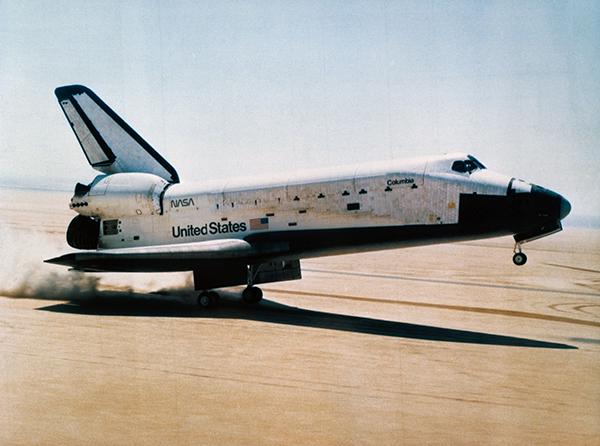
Space shuttle Columbia touches down after the first shuttle mission on April 14, 1981. The world’s first reusable spacecraft and the first combination of launch vehicle, aircraft, and spacecraft, the space shuttle presented new challenges to NASA engineers. To ensure safety throughout repeated cycles of high stress, they created the fracture-mechanics and fatigue crack-growth software now known as NASGRO. Credit: NASA
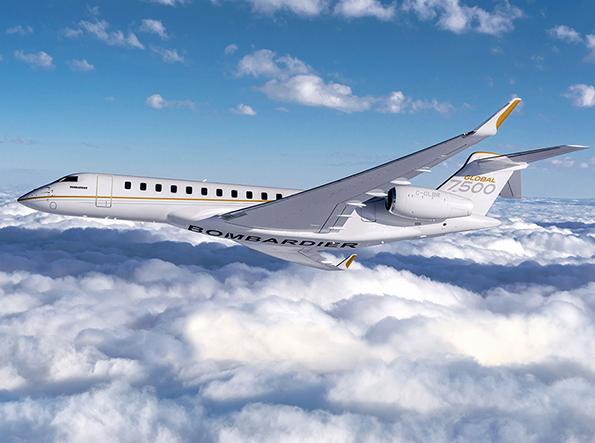
Not only did Bombardier use NASGRO software to design its new Global 7500 long-range business jet, but the company also required all the companies that supplied parts for the plane to analyze those components with NASGRO. Credit: Bombardier Inc.
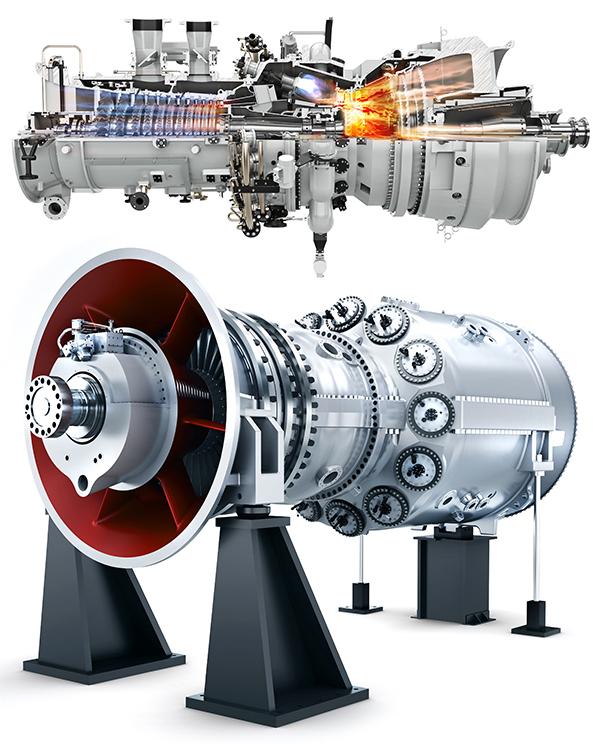
Over 40 feet long, weighing more than a million pounds, and full of fast-spinning, high-temperature parts, Siemens Energy’s SGT5-9000HL gas turbine presents certain safety challenges. To ensure the safety and reliability of turbines like these, which provide power to electrical grids, the company uses NASGRO fracture-mechanics software invented by NASA. Credit: Siemens Energy
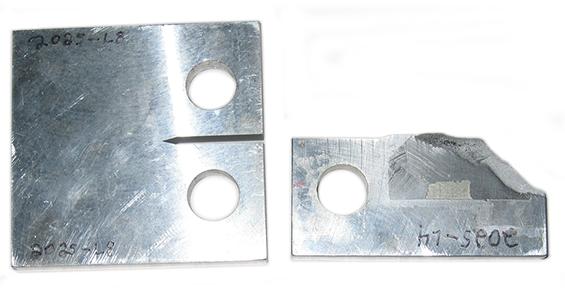
NASGRO software relies on a huge database of material properties, created through extensive testing of physical materials, such as these fracture test specimens. Credit: NASA

The scorched SpaceX Crew Dragon Endeavour capsule is lifted out of the Gulf of Mexico after safely carrying NASA astronauts Robert Behnken and Douglas Hurley from the International Space Station back through Earth’s atmosphere in 2020. To ensure the capsule’s safety and durability under stresses like liftoff and atmospheric reentry, SpaceX engineers used NASGRO software to predict the behavior of any possible cracks or damage to the structure. NASA invented NASGRO to evaluate the world’s first reusable spacecraft, the space shuttle. Credit: NASA













